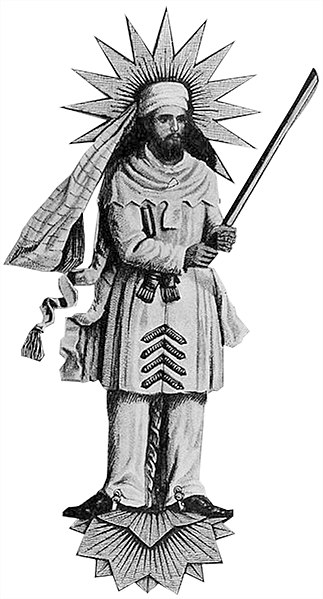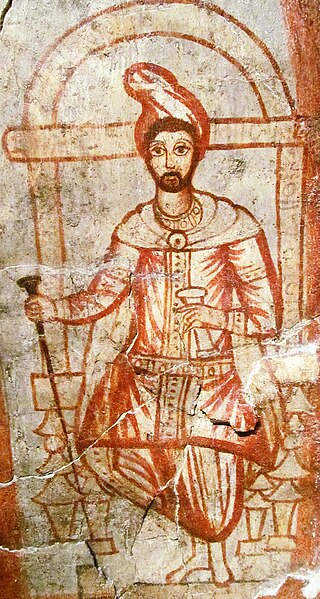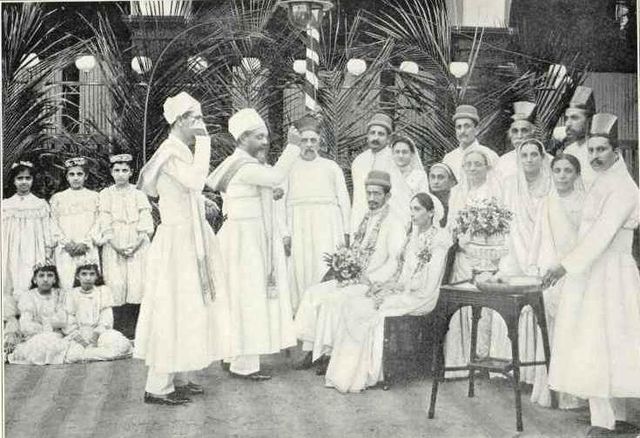Zoroaster, also known as Zarathustra, was a religious reformer and the spiritual founder of Zoroastrianism. In the second millennium BC he founded the first documented monotheistic religion in the world and also had an impact on Heraclitus, Plato, Pythagoras, and the Abrahamic religions, including Judaism, Christianity, and Islam. Zoroastrians believe that he was a prophet who transmitted God's messages and founded a religious movement that challenged the existing traditions of ancient Iranian religion, while in the minority Ahmadiyya branch of Islam and in the Baháʼí Faith, he is also considered a prophet. He was a native speaker of Avestan and lived in the eastern part of the Iranian plateau, but his exact birthplace is uncertain.
19th-century Indian Zoroastrian perception of Zoroaster derived from a figure that appears in a 4th-century sculpture at Taq-e Bostan in South-Western Iran. The original is now believed to be either a representation of Mithra or Hvare-khshaeta.
3rd-century Mithraic depiction of Zoroaster found in Dura Europos, Syria by Franz Cumont
Painted clay and alabaster head of a Zoroastrian priest wearing a distinctive Bactrian-style headdress, Takhti-Sangin, Tajikistan, Greco-Bactrian kingdom, 3rd–2nd century BC
19th century painting depicting the events of Zoroaster's life
Zoroastrianism, also known as Mazdayasna and Behdin, is an Iranian religion. One of the world's oldest organized faiths, it is based on the teachings of the Avesta and the Iranian prophet Zoroaster. Zoroastrians exalt an uncreated and benevolent deity of wisdom, commonly referred to as "Ahura Mazda", as the universe's supreme being; opposed to Ahura Mazda is "Angra Mainyu", who is personified as a destructive spirit and the adversary of all things good. Zoroastranism combines a dualistic cosmology of good and evil with an eschatology predicting the ultimate triumph of Ahura Mazda over evil. Opinions vary among scholars as to whether Zoroastrianism is monotheistic, polytheistic, or henotheistic. Some assert that it combines elements of all three.
Atash Behram at the Fire Temple of Yazd in Iran
A Parsi Wedding, 1905
An 8th century Tang dynasty Chinese clay figurine of a Sogdian man wearing a distinctive cap and face veil, possibly a camel rider or even a Zoroastrian priest engaging in a ritual at a fire temple, since face veils were used to avoid contaminating the holy fire with breath or saliva; Museum of Oriental Art (Turin), Italy.
Ossuary with reliefs of Zoroastrian priests attending a fire, Mullakurgan (near Samarkand), Uzbekistan, 7–8th century CE.








